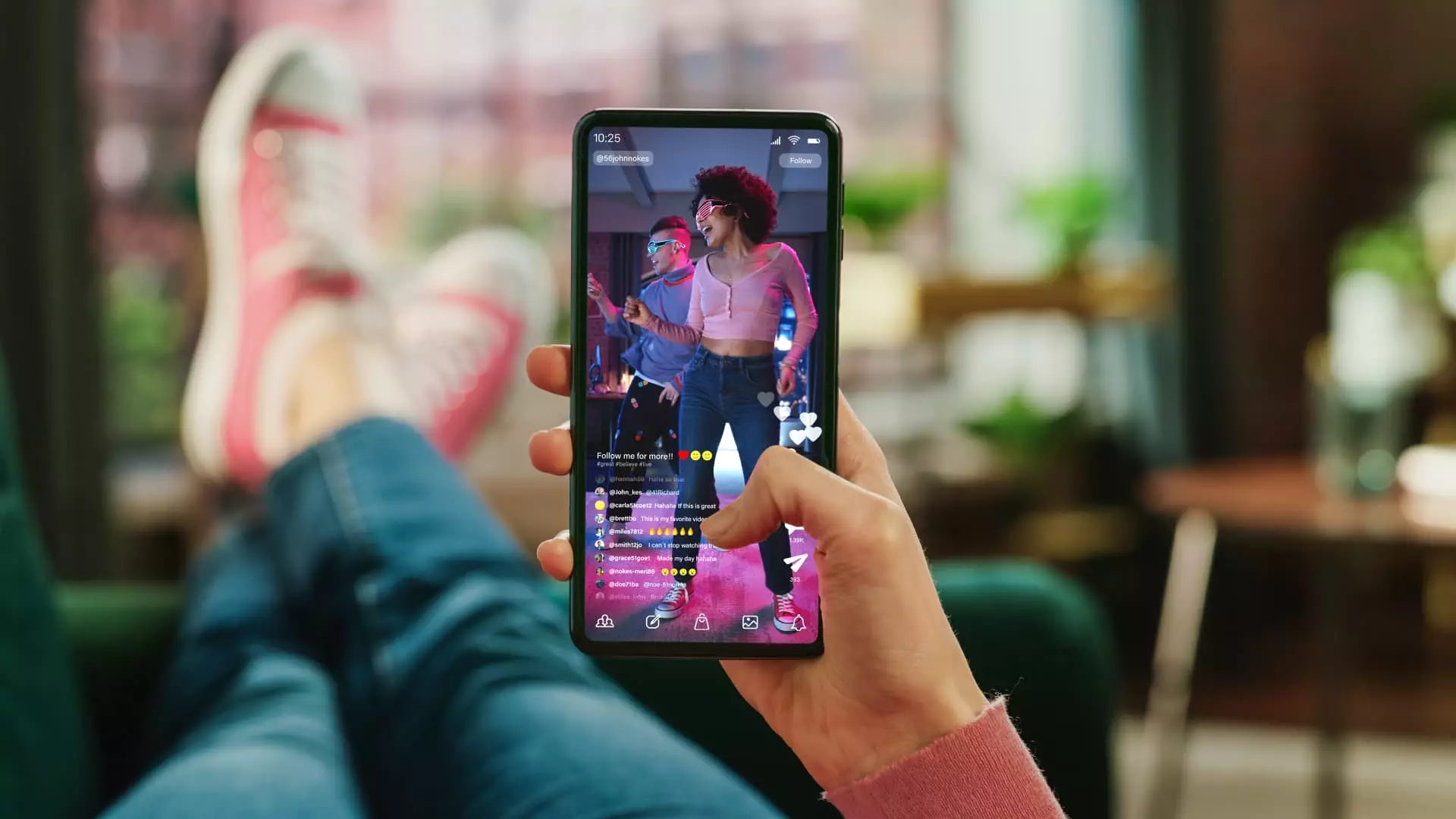In the realm of social media, few platforms have seized attention and engagement like TikTok. Launched globally in 2016 by ByteDance, TikTok has skyrocketed to over 1.12 billion monthly active users, as noted by digital analytics firm Backlinko. A staggering average of 108 minutes spent per day by American users showcases TikTok’s ability to monopolize attention in an era where information overload is the norm. This seemingly insatiable appetite for short-form video content has not only reshaped user behavior but has also compelled industry giants, such as Meta and Google, to scramble for relevance in this dynamically shifting landscape.
TikTok has become what Jasmine Enberg, an analyst at Emarketer, aptly describes as “the center of the internet for young people.” It serves as a multifaceted platform for entertainment, news, trends, and even shopping. Such dominance has propelled competitors to re-evaluate their strategies. Instagram Reels and YouTube Shorts have emerged as desperate contenders in an effort to siphon off TikTok’s user base by rolling out new features and creator tools. However, despite these advancements, none have successfully replicated the captivating algorithm that TikTok boasts, which seems almost magically tuned to the desires and whims of its audience.
The Short-Form Video Landscape: A Mixed Bag of Opportunities and Risks
While platforms scramble to carve out their share of TikTok’s booming popularity, the rapid rise of short-form content has a darker undertone. Experts are raising legitimate concerns about the mental health of younger users, who are increasingly tethered to their screens. Renowned researchers, like Dr. Yann Poncin from Yale University, highlight the potential consequences of “doom scrolling”—a phenomenon wherein users continuously engage with content, often at the expense of their well-being. Dr. Poncin warns of disrupted sleep patterns and heightened anxiety as users bounce from one video to the next. Where once narratives held the power to transport viewers on a journey, today’s rapidly consumable clips are designed to grip attention so intensely that they leave little room for reflection or sustained engagement.
This cultural shift raises an essential question: Are we sacrificing depth for the sake of immediacy? In a world captivated by ‘snackable’ content, the implications for attention spans and immediate gratification are troubling, especially as a generation is molded in this new framework of instant entertainment.
The Monetization Puzzle: Gains vs. Struggles
Despite TikTok’s remarkable engagement metrics, monetization remains a persistent challenge. Unlike long-form content platforms like YouTube, which can seamlessly embed multiple advertisements, the short-form format compromises opportunities for substantial revenue generation. Although TikTok reportedly generated around $23.6 billion in ad revenues last year, many content creators still find it difficult to translate viral success into sustainable earnings. Enberg’s observation that “it’s never been easier to go viral, but never been harder to turn that virality into a sustainable business” rings particularly true in this nuanced landscape.
Platforms like YouTube Shorts often compensate creators at a rate significantly lower than long-form content, paying roughly four cents per 1,000 views. Meanwhile, Instagram is pulling creators into brand partnerships and testing innovative features intended to maximize engagement without compromising monetization potential. Features such as “Trial Reels” allow creators to experiment without the fear of immediate public scrutiny, presenting an intriguing pathway for nurturing creative ideas.
The Competitive Landscape: An Evolving Dynamic
As the competition intensifies, the scrutiny of TikTok’s Chinese ownership has opened discussions around potential restrictions in the U.S. This scrutiny could inadvertently create a window of opportunity for rivals. Meta and YouTube are strategically positioning themselves to capture upwards of 50% of reallocated advertising revenues should TikTok face regulations. This anticipation reflects the broader volatility of digital content consumption and reinforces the necessity for alternatives to thrive in times of discord.
In this high-stakes arena, the challenge will not merely revolve around matching TikTok’s algorithm but also understanding user behaviors, preferences, and the evolving landscape of digital interaction. While TikTok may currently reign supreme, competitors must not only innovate but demonstrate an acute sensitivity to the ongoing concerns surrounding mental health and the complexities of content monetization.
The race to capture and retain attention in the digital space is fraught with challenges and demands an innovative approach that acknowledges both audience engagement and the potential societal implications of a fully entertained yet vulnerable demographic.


Leave a Reply